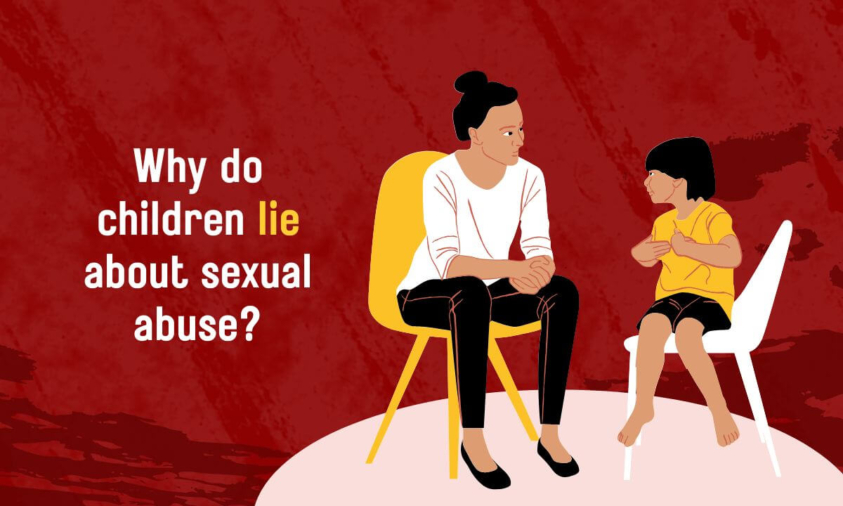An article published by Fair Planet highlights data from the National Crime Records Bureau (NCRB), revealing a notable 8.7% increase in child abuse cases in India during 2022, amounting to a total of 162,000 reported cases. This surge coincided with the COVID-19 lockdowns, shedding light on a troubling trend in incidents of child abuse and crimes against children.
Dr. Jessica Taylor, a psychologist, underscores the disparity between the prevalence of child sexual abuse and the reporting thereof. Studies spanning from 2004 onward indicate that only 30 to 50 percent of adults disclose having experienced sexual abuse during childhood. This statistic suggests that a significant number of children who endure sexual abuse never disclose their experiences.
It is rare for children to falsely claim abuse. Those who do report incidents of sexual abuse often encounter skepticism and face numerous challenges. They are frequently disbelieved, blamed, ostracized by relatives, and their access to support services is often inadequate and restricted. Moreover, they may experience stigma, medicalization, and psychoanalysis as part of their struggle for recognition and assistance.
Reasons that children lie about sexual abuse
- Fear of consequences: A lot of children worry about being punished, rejected, or threatened by their abuser. There are children who are tricked into thinking that speaking the truth will hurt their family.
- Memory contortion: Trauma has the potential to distort memory, resulting in ambiguous or conflicting details that may be misinterpreted by others as signs of dishonesty. A study conducted in Seattle by Lucy Becliner and her colleagues compared the testimonies of children with later confessions made by sexual offenders. The findings revealed that the children’s accounts were not only accurate but also tended to underrepresent the extent of the harm they had endured.
- Influence of authority figures: When children feel intimidated or harassed by parents, law enforcement, or social workers, they may modify their accounts, potentially leading to inconsistencies in their narratives. If the protective system fails to provide adequate support, denying their previous allegations and attempting to resume their former routine may become the child’s most manageable coping mechanism. Tragically, this retraction often occurs in the context of continued vulnerability, as the breakdown of protective systems exposes the child to further risk of exploitation.
- Shame and guilt: Some children may feel too ashamed to disclose the truth or may internalize blame for the abuse they have experienced. This sense of shame can stem from conservative family values or prior instances in which they were shamed for earlier sexual experiences. Additionally, feelings of guilt related to the sexual acts that occurred during the abuse may further inhibit their willingness to speak out.
- Desire for attention or control: In rare cases, children may make false accusations; however, such instances are typically driven by emotional distress or external pressure rather than intentional deceit or malice.
Myths vs. Facts
There are numerous cases where children’s disclosures of abuse are met with disbelief. To foster a safer environment for children, it is essential to challenge and dispel common myths surrounding child sexual abuse.
Myth: Children frequently lie about being sexually abused.
Fact: Research consistently shows that false allegations made by children are exceptionally rare, with estimates ranging between 2% and 10%. In reality, children are more likely to downplay or deny abuse due to fear, confusion, or shame.
Myth: A child must be lying if their account changes.
Fact: Variations in a child’s narrative are not necessarily signs of deceit. Children may recall events out of order or disclose details gradually as they begin to feel safer. Inconsistencies should be understood within the context of trauma, not equated with dishonesty.
Myth: If there are no physical signs, then abuse did not occur.
Fact: Physical evidence is often absent in cases of sexual abuse, especially when there is a delay in reporting. More commonly, indicators of abuse manifest through emotional or behavioural changes rather than physical symptoms.
Myth: Children invent stories of abuse to gain attention or seek revenge.
Fact: Most children lack the knowledge or context to fabricate stories about sexual abuse. When false claims do arise, they are typically the result of misunderstanding or external influence, not malicious intent.
Myth: Children who have been abused will report it immediately.
Fact: Many children delay disclosure for weeks, months, or even years—especially when the perpetrator is a family member or trusted adult. Silence is often a coping mechanism or a survival strategy in threatening environments.
Myth: Trained professionals can easily detect when a child is lying.
Fact: Even experienced professionals often struggle to distinguish truth from fabrication in interviews. Therefore, it is critical to employ comprehensive, trauma-informed approaches when investigating allegations of child abuse.
Conclusion
Contrary to popular belief, children do not typically lie about experiencing sexual abuse. More often, they navigate a complex interplay of social pressure, fear, and memory-related challenges. The withdrawal of charges or partial retraction of statements should not be interpreted as evidence of fabrication. Even amidst public skepticism and legal disputes, many children continue to feel misunderstood and re-traumatized. Despite the presence of comprehensive legal frameworks such as the Protection of Children from Sexual Offences (POCSO) Act in India, child abuse remains a pressing issue. Experts stress that the key to ensuring timely intervention and effective rehabilitation lies in the proper implementation of POCSO provisions and the strengthening of local human resource capacities.
In case you are looking for customized child safety training, POCSO-related training, or POCSO advisory services, please feel free to reach out to us at +919004521614 or [email protected].
Authored by Tara Chanda, Content Writer Intern


 Cart is empty
Cart is empty 
